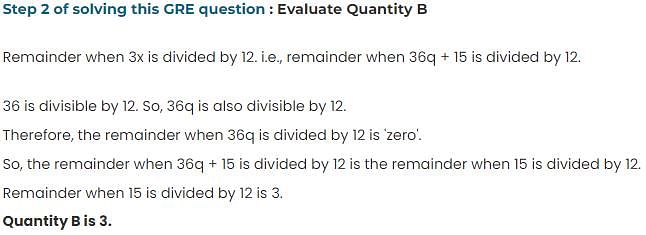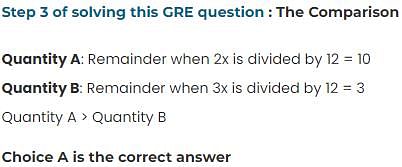GRE Mock Test (New Pattern) - 5 - GRE MCQ
30 Questions MCQ Test GRE Mock Test Series 2024 - GRE Mock Test (New Pattern) - 5
Before the Parliament met, Richard executed a formal deed of (i) __________, renouncing all royal rights, and absolving all his people from homage, (ii) __________ and allegiance, and declaring himself worthy to be (iii) __________.


Before India gained Independence, most of its citizens were __________: they knew little about the outside world.
| 1 Crore+ students have signed up on EduRev. Have you? Download the App |
The yoking of Mahabharata, a major epic of ancient India, to modern history needed a style as varied in tone, form, and (i) __________ as the epic itself, with its numerous (ii) __________ and digressions: the story of India had to come across as a tale of many tellers, even if it is (iii) __________ only to one.


Since the senator previously had expressed few qualms about the proposed amendment, the other members of his party were understandably __________ by his sudden, vehement objections.
[ Note: Select 2 answer choices ]
The newsreader, though otherwise always sullen, was unusually __________ today.
[ Note: Select 2 answer choices ]
According to the youngsters of today’s generation, happiness is __________. So, they believe that it is almost impossible to stay happy for a long time.
[ Note: Select 2 answer choices ]
Directions: After reading the passage, read and respond to the questions that follow by selecting the best choice for each one.
[1] An atmospheric gas that absorbs and emits thermal radiation in the infrared range is known as a greenhouse gas. [2] Without such gases, the surface temperature of the earth would have been a frigid -18°C instead of the current 15°C. [3] Many climate scientists claim that human activities since the beginning of the Industrial Revolution have led to a steady increase in the atmospheric concentration of many greenhouse gases, with a consequent increase in the planet's surface temperature by about 0.85°C in the last 130 years. [4] However, in order to correctly estimate the anthropogenic changes in earth's surface temperature, it is important to quantify the effect of external natural factors like large volcanic eruptions on the planet's surface temperature.
[5] Though volcanic eruptions emit carbon dioxide, a greenhouse gas, the atmospheric concentration of this gas is about 16000 times the amount released by volcanic eruptions; therefore, no matter how large a volcanic eruption is, it cannot produce a significant change in the atmospheric carbon dioxide levels. [6] Further, the total amount of carbon dioxide emitted per year by volcanic eruptions – between 130 and 230 million tons – is roughly equivalent to that emitted in only three to five days of human activity.
[7] It is mainly through the emission of sulfur dioxide gas and ash particles into the atmosphere that large volcanic eruptions affect earth's surface temperature. [8] Sulfur dioxide reacts with the water vapor present in air to form fine particles called sulfate aerosols. [9] Winds spread the cloud of aerosols and ash particles around the globe in weeks. [10] These particles absorb incoming solar radiation and scatter it back into space, thereby producing a cooling effect on the earth. [11] They take several years to settle out of the atmosphere and thus impact the global surface temperature for many years. [12] Robock and Mao have shown that for two years after a great volcanic eruption, the surface temperature decreases by 0.1 – 0.2°C. [13] The 1991 Pinatubo eruption in Indonesia was one of the largest volcanic eruptions in the twentieth century and resulted in a global surface cooling of 0.5°C for about two to four years after the eruption.
[14] The El Chichón eruption in 1982 was the first major eruption whose climatic impact was studied in detail by modern instruments. [15] Though the emission volume of this eruption was similar to the Mount St. Helens eruption in 1980, El Chichón released seven times the amount of sulfate aerosols released by Mount St. Helens and lowered the earth's temperature by about 0.4°C as against a decrease of only 0.1°C for Mount St. Helens.
Q. With which of the statements about changes in the earth's surface temperature is the author most likely to disagree?
Directions: After reading the passage, read and respond to the questions that follow by selecting the best choice for each one.
[1] An atmospheric gas that absorbs and emits thermal radiation in the infrared range is known as a greenhouse gas. [2] Without such gases, the surface temperature of the earth would have been a frigid -18°C instead of the current 15°C. [3] Many climate scientists claim that human activities since the beginning of the Industrial Revolution have led to a steady increase in the atmospheric concentration of many greenhouse gases, with a consequent increase in the planet's surface temperature by about 0.85°C in the last 130 years. [4] However, in order to correctly estimate the anthropogenic changes in earth's surface temperature, it is important to quantify the effect of external natural factors like large volcanic eruptions on the planet's surface temperature.
[5] Though volcanic eruptions emit carbon dioxide, a greenhouse gas, the atmospheric concentration of this gas is about 16000 times the amount released by volcanic eruptions; therefore, no matter how large a volcanic eruption is, it cannot produce a significant change in the atmospheric carbon dioxide levels. [6] Further, the total amount of carbon dioxide emitted per year by volcanic eruptions – between 130 and 230 million tons – is roughly equivalent to that emitted in only three to five days of human activity.
[7] It is mainly through the emission of sulfur dioxide gas and ash particles into the atmosphere that large volcanic eruptions affect earth's surface temperature. [8] Sulfur dioxide reacts with the water vapor present in air to form fine particles called sulfate aerosols. [9] Winds spread the cloud of aerosols and ash particles around the globe in weeks. [10] These particles absorb incoming solar radiation and scatter it back into space, thereby producing a cooling effect on the earth. [11] They take several years to settle out of the atmosphere and thus impact the global surface temperature for many years. [12] Robock and Mao have shown that for two years after a great volcanic eruption, the surface temperature decreases by 0.1 – 0.2°C. [13] The 1991 Pinatubo eruption in Indonesia was one of the largest volcanic eruptions in the twentieth century and resulted in a global surface cooling of 0.5°C for about two to four years after the eruption.
[14] The El Chichón eruption in 1982 was the first major eruption whose climatic impact was studied in detail by modern instruments. [15] Though the emission volume of this eruption was similar to the Mount St. Helens eruption in 1980, El Chichón released seven times the amount of sulfate aerosols released by Mount St. Helens and lowered the earth's temperature by about 0.4°C as against a decrease of only 0.1°C for Mount St. Helens.
Q. It can be inferred that the highlighted word in the first paragraph is closest in meaning to
Directions: After reading the passage, read and respond to the questions that follow by selecting the best choice for each one.
[1] An atmospheric gas that absorbs and emits thermal radiation in the infrared range is known as a greenhouse gas. [2] Without such gases, the surface temperature of the earth would have been a frigid -18°C instead of the current 15°C. [3] Many climate scientists claim that human activities since the beginning of the Industrial Revolution have led to a steady increase in the atmospheric concentration of many greenhouse gases, with a consequent increase in the planet's surface temperature by about 0.85°C in the last 130 years. [4] However, in order to correctly estimate the anthropogenic changes in earth's surface temperature, it is important to quantify the effect of external natural factors like large volcanic eruptions on the planet's surface temperature.
[5] Though volcanic eruptions emit carbon dioxide, a greenhouse gas, the atmospheric concentration of this gas is about 16000 times the amount released by volcanic eruptions; therefore, no matter how large a volcanic eruption is, it cannot produce a significant change in the atmospheric carbon dioxide levels. [6] Further, the total amount of carbon dioxide emitted per year by volcanic eruptions – between 130 and 230 million tons – is roughly equivalent to that emitted in only three to five days of human activity.
[7] It is mainly through the emission of sulfur dioxide gas and ash particles into the atmosphere that large volcanic eruptions affect earth's surface temperature. [8] Sulfur dioxide reacts with the water vapor present in air to form fine particles called sulfate aerosols. [9] Winds spread the cloud of aerosols and ash particles around the globe in weeks. [10] These particles absorb incoming solar radiation and scatter it back into space, thereby producing a cooling effect on the earth. [11] They take several years to settle out of the atmosphere and thus impact the global surface temperature for many years. [12] Robock and Mao have shown that for two years after a great volcanic eruption, the surface temperature decreases by 0.1 – 0.2°C. [13] The 1991 Pinatubo eruption in Indonesia was one of the largest volcanic eruptions in the twentieth century and resulted in a global surface cooling of 0.5°C for about two to four years after the eruption.
[14] The El Chichón eruption in 1982 was the first major eruption whose climatic impact was studied in detail by modern instruments. [15] Though the emission volume of this eruption was similar to the Mount St. Helens eruption in 1980, El Chichón released seven times the amount of sulfate aerosols released by Mount St. Helens and lowered the earth's temperature by about 0.4°C as against a decrease of only 0.1°C for Mount St. Helens.
Q. Select a sentence in the passage that, if true, supports the claim that the primary cause of the steady increase in the atmospheric concentration of greenhouse gases is not volcanic eruptions but human activities.
Directions: After reading the passage, read and respond to the questions that follow by selecting the best choice for each one.
[1] An atmospheric gas that absorbs and emits thermal radiation in the infrared range is known as a greenhouse gas. [2] Without such gases, the surface temperature of the earth would have been a frigid -18°C instead of the current 15°C. [3] Many climate scientists claim that human activities since the beginning of the Industrial Revolution have led to a steady increase in the atmospheric concentration of many greenhouse gases, with a consequent increase in the planet's surface temperature by about 0.85°C in the last 130 years. [4] However, in order to correctly estimate the anthropogenic changes in earth's surface temperature, it is important to quantify the effect of external natural factors like large volcanic eruptions on the planet's surface temperature.
[5] Though volcanic eruptions emit carbon dioxide, a greenhouse gas, the atmospheric concentration of this gas is about 16000 times the amount released by volcanic eruptions; therefore, no matter how large a volcanic eruption is, it cannot produce a significant change in the atmospheric carbon dioxide levels. [6] Further, the total amount of carbon dioxide emitted per year by volcanic eruptions – between 130 and 230 million tons – is roughly equivalent to that emitted in only three to five days of human activity.
[7] It is mainly through the emission of sulfur dioxide gas and ash particles into the atmosphere that large volcanic eruptions affect earth's surface temperature. [8] Sulfur dioxide reacts with the water vapor present in air to form fine particles called sulfate aerosols. [9] Winds spread the cloud of aerosols and ash particles around the globe in weeks. [10] These particles absorb incoming solar radiation and scatter it back into space, thereby producing a cooling effect on the earth. [11] They take several years to settle out of the atmosphere and thus impact the global surface temperature for many years. [12] Robock and Mao have shown that for two years after a great volcanic eruption, the surface temperature decreases by 0.1 – 0.2°C. [13] The 1991 Pinatubo eruption in Indonesia was one of the largest volcanic eruptions in the twentieth century and resulted in a global surface cooling of 0.5°C for about two to four years after the eruption.
[14] The El Chichón eruption in 1982 was the first major eruption whose climatic impact was studied in detail by modern instruments. [15] Though the emission volume of this eruption was similar to the Mount St. Helens eruption in 1980, El Chichón released seven times the amount of sulfate aerosols released by Mount St. Helens and lowered the earth's temperature by about 0.4°C as against a decrease of only 0.1°C for Mount St. Helens.
Q. From the passage above, which of the following can be most reliably inferred about sulfur dioxide emissions from volcanic eruptions?
The odd thing about the new system was that even though it was not perfectly aligned with capitalism, yet it was successfully implemented without __________ the capitalists.
While not specifically considering __________, the brothers nevertheless cancelled the legal suits that they had filed against each other in the property dispute.
Petty arrests don't make the public safer; moreover, the defendants who get (i) __________ into the justice system on low-level charges can have trouble getting jobs, attending school, or entering the military, and run a risk of long-term (ii) __________ with the law.
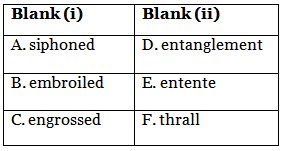
Though comedy was the (i) __________ of the actor, he performed serious roles with (ii) __________.

Six months after Hurricane Maria, the island __________ with the longest blackout in the U.S. history.
[ Note: Select 2 answer choices ]
Bob Dylan, the poet laureate of the rock era, is the first musician to win the Nobel Prize, and his selection for the coveted award is perhaps the most __________ choice in the history of the Nobel Prize that stretches back to 1901.
[ Note: Select 2 answer choices ]
Even though his behavior alienated his colleagues, Phillip often used __________ to achieve his career goals.
[ Note: Select 2 answer choices ]
Directions: Each question shows a quantity in Column A and a quantity in Column B. Compare the two quantities.
When a positive integer x is divided by 12, the remainder is 5.

Directions: Each question shows a quantity in Column A and a quantity in Column B. Compare the two quantities.
Q.
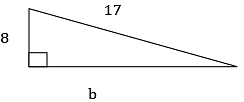

Directions: Each question shows a quantity in Column A and a quantity in Column B. Compare the two quantities.
Q. Isosceles triangle △DEF has a perimeter of 24 and side DE has a length of 12.

Directions: Each question shows a quantity in Column A and a quantity in Column B. Compare the two quantities.
Q. This question refer to the figure below.


Directions: Choose the letter that best answers the question.
Q. After taking five tests, one student's average grade is 65. If the student scores 83 on his next test, what will his new average be?
Directions: Choose the letter that best answers the question. Refer to the charts below.

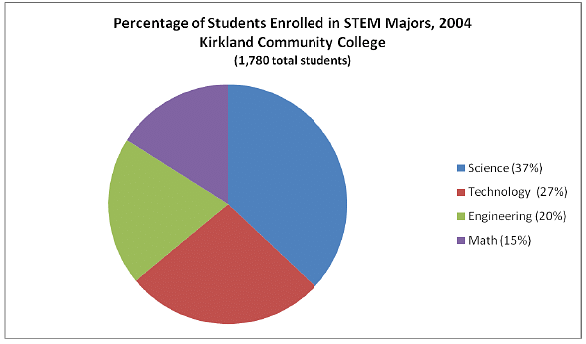
Q. With respect to what students plan to do after receiving their liberal arts degree, what area has experienced the greatest growth from 2000 to 2004?
Directions: Choose the letter that best answers the question. Refer to the charts below.

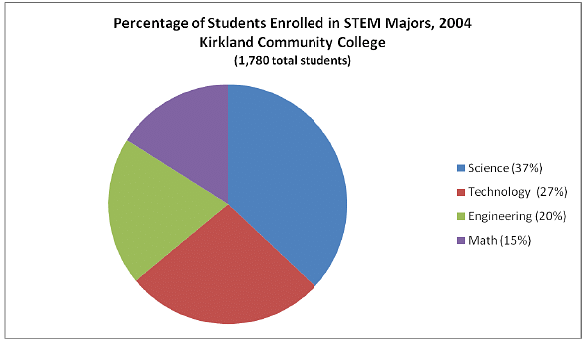
Q. Which statement is true about comparing the enrollment of students in the liberal arts major from 2000 and 2004?
Directions: Choose the letter that best answers the question. Refer to the charts below.


Q. What percentage of students were unsure of their future plans in 2004?
Directions: Each question shows a quantity in Column A and a quantity in Column B. Compare the two quantities.
Q. This question refer to the figure below.


Directions: Each question shows a quantity in Column A and a quantity in Column B. Compare the two quantities.
Q. Recorded attendance at weekly seminars in the first quarter of the year has been: 117, 103, 109, 100, 125, 115, 120, 126, 130, 106, 109, 125

Directions: Each question shows a quantity in Column A and a quantity in Column B. Compare the two quantities.
Q. Consider these two expressions:
4x - 3y = 8
-2x + 5y = 10

Directions: Each question shows a quantity in Column A and a quantity in Column B. Compare the two quantities.
Q. A is the center of the circle; BD = 17 cm.


Directions: Choose the letter that best answers the question.
Q. The perimeter of triangle ABC is 84. The perimeter of isosceles triangle BCD is 110. What is the length of CD?

|
1 docs|20 tests
|




